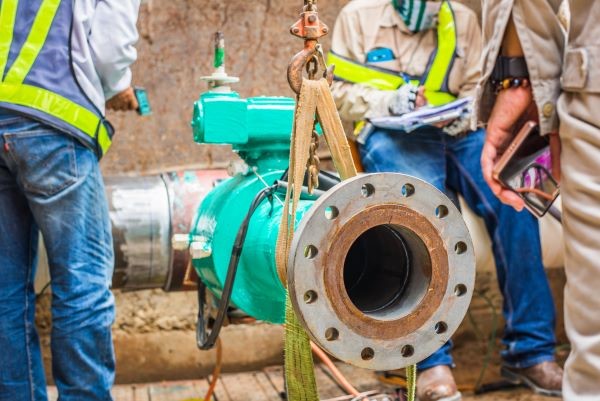354-Mile Vaca Muerta Pipeline Needs Investment to Deliver Argentina's Gas Dreams, Experts Say
(Reuters) — Argentina's Vaca Muerta gas pipeline, whose first section was recently inaugurated, still needs billions of dollars in investment to turn Latin America's third-largest economy into a global fuel supplier, experts said.
The pipeline will carry gas from Vaca Muerta, a shale formation the size of Belgium in western Argentina, to Santa Fe province via Buenos Aires — an essential step to reversing Argentina's $5 billion energy trade deficit.
The government, hoping to cling to power in upcoming elections in October, often touts the economic benefits of the pipeline and says it can help deliver energy security for the country.
However, former officials said, while the pipeline may be able to deliver on Argentina's domestic energy goals, more investment is needed for it to turn the country into an exporter.
Argentina could export the same amount of gas it consumes — about 2 trillion cubic feet (Tcf) — annually, but that would require investments of $40 billion, Javier Iguacel, Argentina's former energy minister, said.
"I calculate that this first section of the gas pipeline is barely 5% of everything that needs to be done," he continued, adding new pipeline construction, port infrastructure and liquefaction plants would be needed.
The first section of the 570-kilometer (354 miles) gas pipeline was completed this month. Once two compression plants are installed, this will add 22 million cubic meters per day in capacity.
Capacity will increase to 44 million cubic meters per day in 2024, when the second stage of construction is completed.
Vaca Muerta's potential is much larger, said Emilio Apud, former secretary of energy, adding the formation's total resources are estimated at 300 Tcf or the equivalent of 150 years of the country's consumption.
Some argue Argentina should take advantage of its vast gas resources to fuel the energy transition, because gas emits the least planet-warming gasses of all fossil fuels.
Argentina's Energy Secretariat expects global demand for liquefied natural gas to double by 2050.
Positive Balance
Apud said the pipeline will help reverse Argentina's energy deficit, predicting there will be a positive energy balance by 2025.
However, he continued, far more infrastructure would be needed for Argentina to begin supplying others as well:
"In the next 10 years there have to be at least six new gas pipelines, not for the local market but for the export market through (liquefaction) plants."
The current government is trying to encourage LNG plant and pipeline construction, including via legislation offering tax breaks and other benefits.
The proposal, which needs to be approved by Congress, is currently being studied by legislators.
"A regulatory framework is needed," Pablo Gonzalez, president of state oil company YPF, said in a statement.
YPF and Malaysia's Petronas expect to decide in 2024 on a joint, $40 billion Vaca Muerta infrastructure investment capable of producing up to 5 million metric tons of LNG per year.
Gonzalez said the project could generate $20 billion in exports annually.
U.S. gas distribution company Excelerate Energy has said its planned liquefaction plant in Argentina could come online in 2025, with a capacity of 8 million cubic meters per day.
Chinese and Russian companies have also shown interest in investing in the sector, Argentina's Energy Secretary Flavia Royon told lawmakers this month.
Related News
Related News

- Keystone Oil Pipeline Resumes Operations After Temporary Shutdown
- Freeport LNG Plant Runs Near Zero Consumption for Fifth Day
- Biden Administration Buys Oil for Emergency Reserve Above Target Price
- Mexico Seizes Air Liquide's Hydrogen Plant at Pemex Refinery
- Enbridge to Invest $500 Million in Pipeline Assets, Including Expansion of 850-Mile Gray Oak Pipeline





Comments